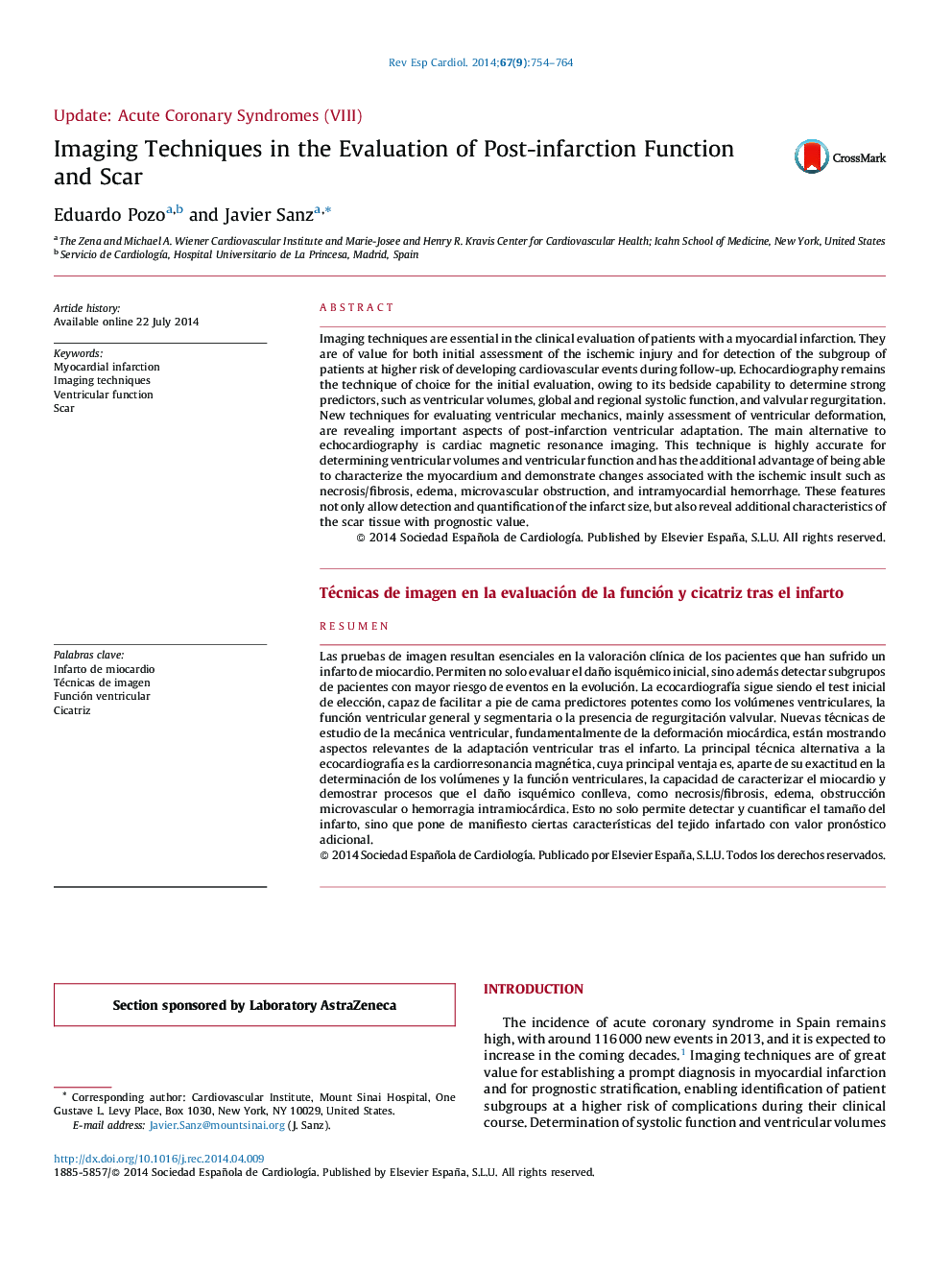| کد مقاله | کد نشریه | سال انتشار | مقاله انگلیسی | نسخه تمام متن |
|---|---|---|---|---|
| 3017282 | 1182113 | 2014 | 11 صفحه PDF | دانلود رایگان |
Imaging techniques are essential in the clinical evaluation of patients with a myocardial infarction. They are of value for both initial assessment of the ischemic injury and for detection of the subgroup of patients at higher risk of developing cardiovascular events during follow-up. Echocardiography remains the technique of choice for the initial evaluation, owing to its bedside capability to determine strong predictors, such as ventricular volumes, global and regional systolic function, and valvular regurgitation. New techniques for evaluating ventricular mechanics, mainly assessment of ventricular deformation, are revealing important aspects of post-infarction ventricular adaptation. The main alternative to echocardiography is cardiac magnetic resonance imaging. This technique is highly accurate for determining ventricular volumes and ventricular function and has the additional advantage of being able to characterize the myocardium and demonstrate changes associated with the ischemic insult such as necrosis/fibrosis, edema, microvascular obstruction, and intramyocardial hemorrhage. These features not only allow detection and quantification of the infarct size, but also reveal additional characteristics of the scar tissue with prognostic value.
ResumenLas pruebas de imagen resultan esenciales en la valoración clínica de los pacientes que han sufrido un infarto de miocardio. Permiten no solo evaluar el daño isquémico inicial, sino además detectar subgrupos de pacientes con mayor riesgo de eventos en la evolución. La ecocardiografía sigue siendo el test inicial de elección, capaz de facilitar a pie de cama predictores potentes como los volúmenes ventriculares, la función ventricular general y segmentaria o la presencia de regurgitación valvular. Nuevas técnicas de estudio de la mecánica ventricular, fundamentalmente de la deformación miocárdica, están mostrando aspectos relevantes de la adaptación ventricular tras el infarto. La principal técnica alternativa a la ecocardiografía es la cardiorresonancia magnética, cuya principal ventaja es, aparte de su exactitud en la determinación de los volúmenes y la función ventriculares, la capacidad de caracterizar el miocardio y demostrar procesos que el daño isquémico conlleva, como necrosis/fibrosis, edema, obstrucción microvascular o hemorragia intramiocárdica. Esto no solo permite detectar y cuantificar el tamaño del infarto, sino que pone de manifiesto ciertas características del tejido infartado con valor pronóstico adicional.
Journal: Revista Española de Cardiología (English Edition) - Volume 67, Issue 9, September 2014, Pages 754–764
